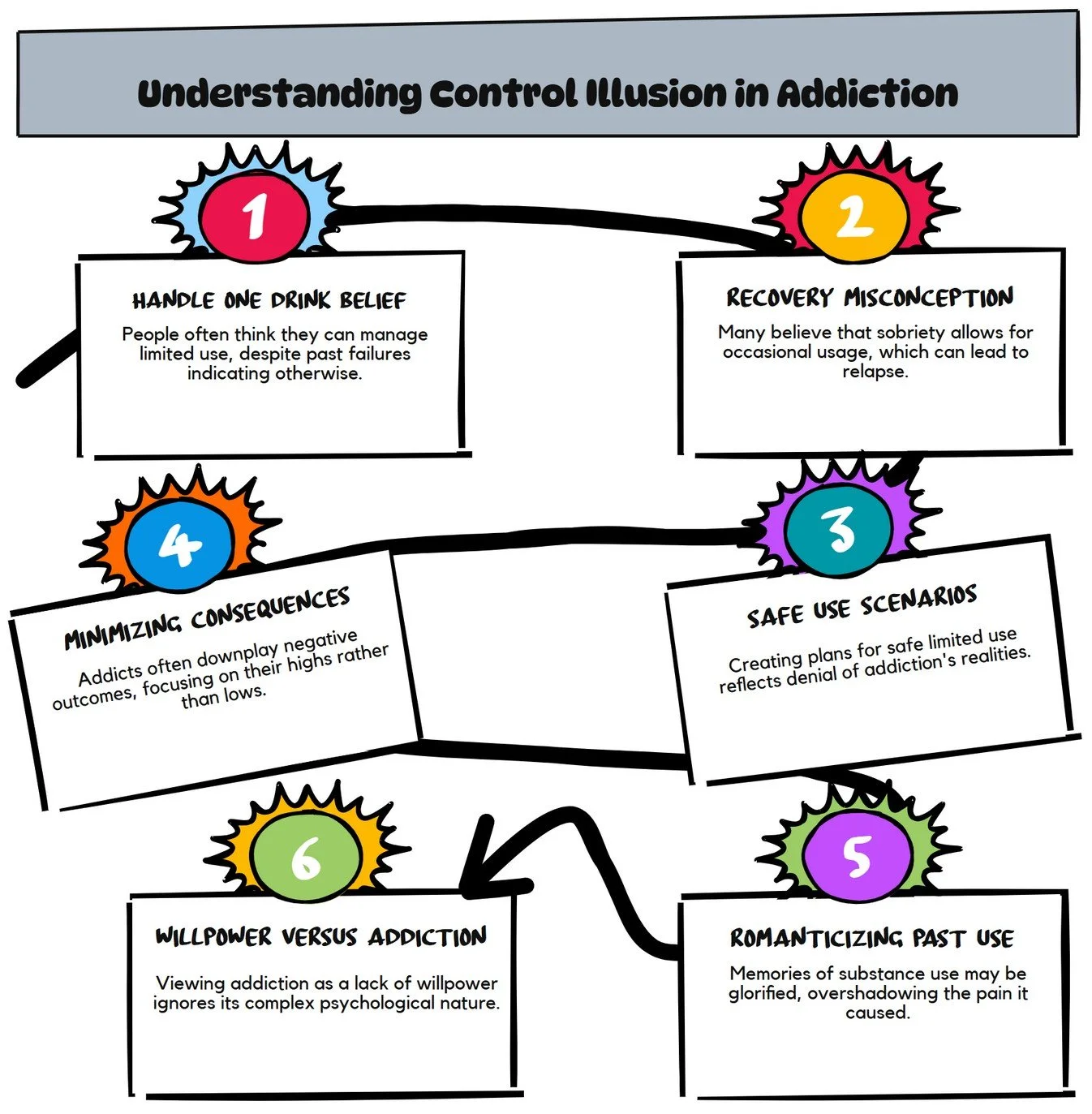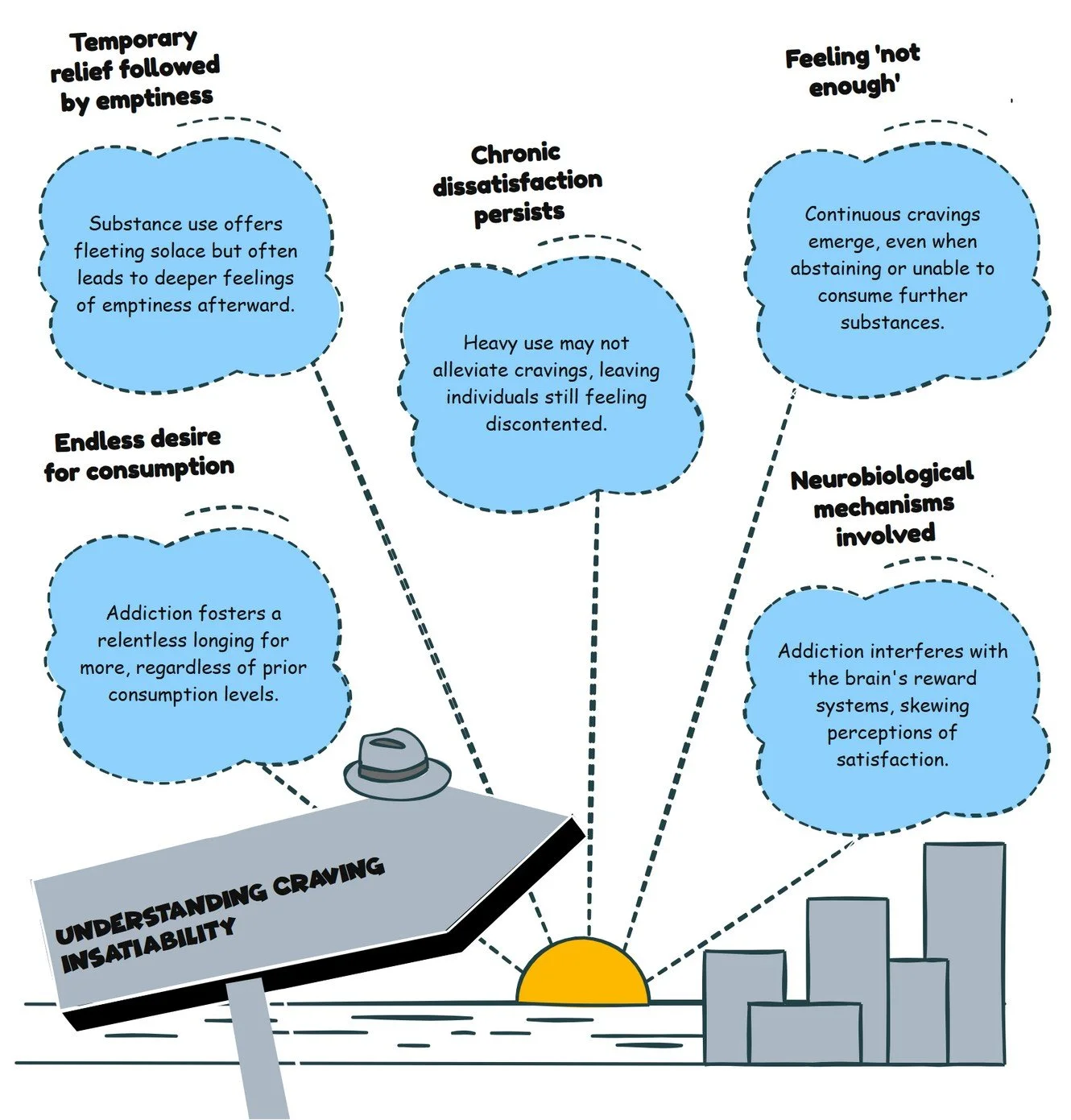
“One is Too Many, and a Thousand is Not Enough”
This self-assessment is designed to help individuals in recovery explore their relationship with the fundamental AA principle embodied in the saying "one is too many, a thousand is not enough." This paradoxical statement captures the essence of addiction's dual nature: the impossibility of controlled use ("one is too many") and the insatiable, never-satisfied quality of addictive craving ("a thousand is not enough").
The complexity of this principle lies in its challenge to common-sense thinking about moderation and control. For those without addiction, the idea of "just one" seems reasonable, manageable, even healthy. However, for individuals with addiction, this assessment explores how "one" represents not moderation but the gateway to complete loss of control, while simultaneously examining how no amount of the substance ever truly satisfies the underlying craving.
Control Illusion
Control illusion involves the persistent belief that controlled use is possible despite overwhelming evidence to the contrary. This dimension reflects how addiction affects judgment and memory, creating selective recall that minimizes consequences while amplifying memories of temporary pleasure or relief.
Common manifestations include:
Thinking "I could probably handle just one now"
Believing recovery has made controlled use possible
Planning scenarios where limited use might be "safe"
Minimizing past consequences while romanticizing past use
Viewing inability to control use as a failure of willpower rather than a symptom of addiction
This illusion creates vulnerability by undermining the fundamental premise of recovery—that complete abstinence is necessary. It transforms the protective understanding "I cannot use safely" into the dangerous question "Maybe I can use safely now."
Craving Insatiability
Craving insatiability involves recognizing that no amount of the substance ever truly satisfies the underlying craving or need that drives use. This dimension reflects the neurobiological reality that addiction hijacks the brain's satisfaction and reward systems.
This insatiability typically manifests as:
Always wanting more regardless of quantity consumed
Feeling unsatisfied even during heavy use periods
Experiencing constant "not enough" feelings even when physically unable to consume more
Feeling empty immediately after use despite initial relief
Recognizing that craving was never truly satisfied, only temporarily quieted
Understanding this insatiability creates protection by revealing that return to use won't provide the satisfaction it promises. It exposes the fundamental lie of addiction: that enough substance exists to fill the underlying emptiness.
All-or-Nothing Reality
All-or-nothing reality involves accepting that moderation is not possible and that any use inevitably leads to the same destructive patterns. This dimension reflects the binary nature of the addicted brain's response to substances.
Signs of this reality include:
Recognizing that moderation has never worked long-term
Understanding that any use activates the same destructive patterns
Accepting that your brain processes substances differently than non-addicted individuals
Acknowledging that "normal" use is not an option
Seeing clearly that your relationship with substances is fundamentally different
This acceptance creates protection by eliminating the exhausting and dangerous middle ground of "controlled use" attempts. It provides clarity and direction: complete abstinence is the only safe choice.
Threshold Awareness
Threshold awareness involves recognizing that the point of no return occurs with the first use, not after multiple uses. This dimension reflects understanding where control is actually lost—before use begins, not during use.
Key aspects include:
Understanding that the first drink/drug is where control is lost
Recognizing that the decision that matters is whether to take the first one
Seeing that stopping becomes impossible once use begins
Understanding that the "first one" is the most dangerous
Recognizing that addiction is activated by any use, not just heavy use
This awareness creates protection by focusing prevention efforts on the right target: avoiding that first use entirely rather than trying to control subsequent use.
Satisfaction Mythology
Satisfaction mythology involves examining and dismantling beliefs about when "enough" would be enough. This dimension explores the false belief that dissatisfaction came from insufficient quantity rather than the nature of addiction itself.
Common myths include:
Believing sufficient quantity would create satisfaction
Thinking the problem was limited access rather than insatiable craving
Attributing dissatisfaction to having to control use
Believing unlimited access would solve the satisfaction problem
Focusing on external limits rather than internal impossibility of satisfaction
Dismantling these myths creates protection by revealing that the problem was never quantity but the nature of addiction itself. No amount would ever have been enough.





